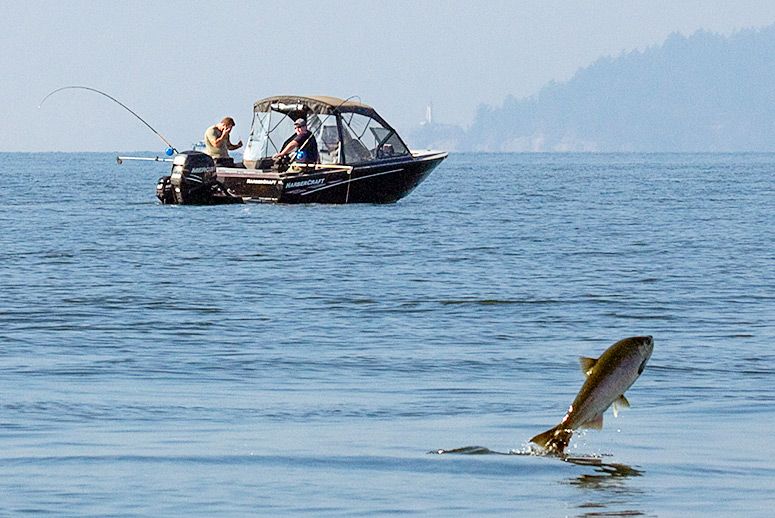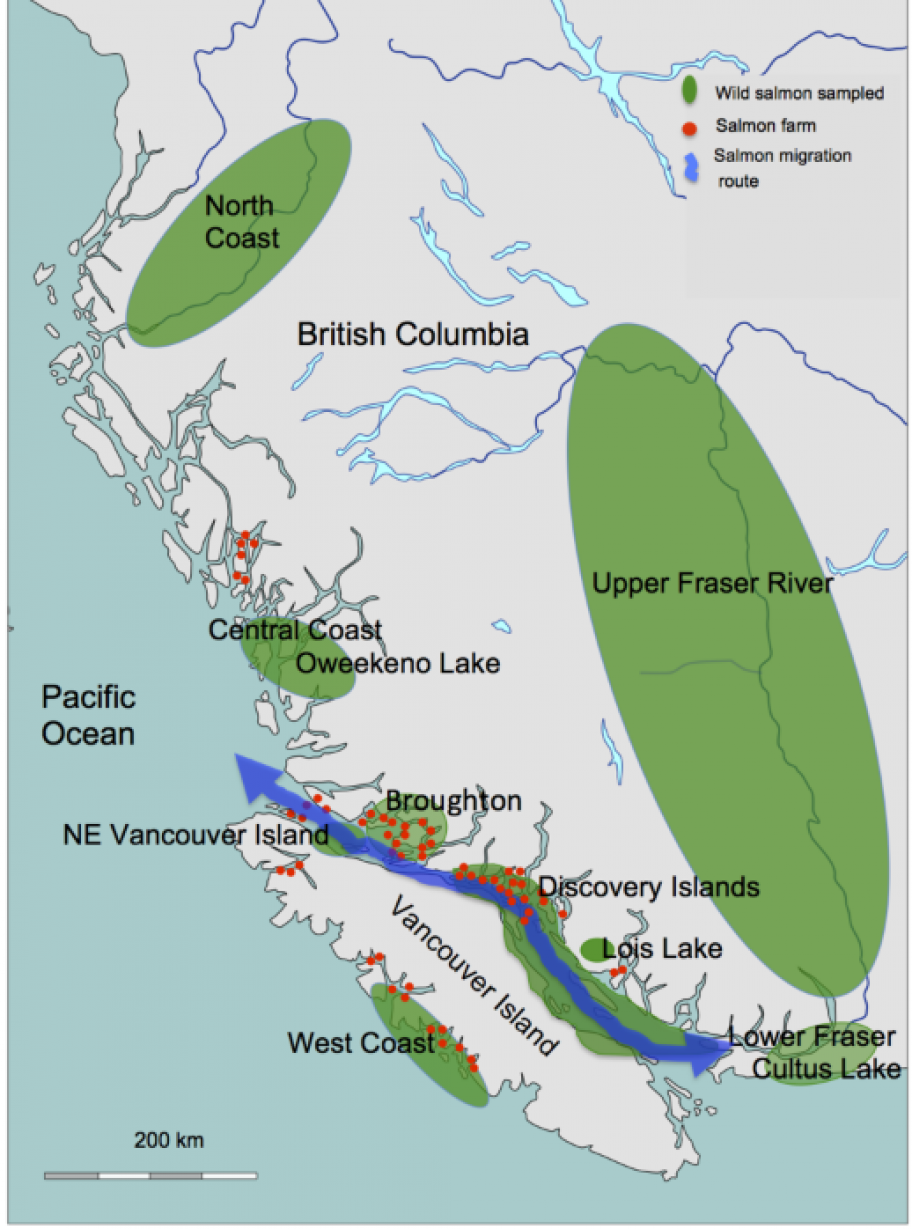Comments Reviews on theboatpeople.com Raft Cataraft Inflatable Kayak Products and Service › Forums › Environmental News › Researchers Detect Devastating Virus in Farmed Salmon
- This topic has 0 replies, 1 voice, and was last updated 9 years, 2 months ago by
 Lee Arbach TBP.
Lee Arbach TBP.
-
AuthorPosts
-
January 12, 2016 at 9:28 am #2905
 Lee Arbach TBPKeymaster
Lee Arbach TBPKeymasterScientists found the pathogen in both wild and pen-raised fish in British Columbia.

A salmon jumps out of the water while feeding at the mouth of the Capilano River in West Vancouver, British Columbia. (Photo: Andy Clark/Reuters)A pathogen that is “arguably the most feared viral disease of the marine farmed salmon industry” has turned up for the first time in farmed and wild fish in British Columbia, according to a new study in Virology Journal. The authors warn that the presence of the virus, called infectious salmon anemia virus, could greatly increase the risk of devastating outbreaks for salmon fisheries from Alaska down to the Pacific Northwest.
“This is first of all a salmon virus and a member of the influenza family, and it mutates easily and rapidly,” said coauthor Alexandra Morton, an independent marine biologist. “There is no place in the world where this virus has existed quietly. It has always caused a problem. It was detected in Chile in 1999, and nothing was done to contain it. They allowed it to reproduce and mutate, and in 2007 a form appeared that swept the coast and caused $2 billion in damage.”
The B.C. Salmon Farmers Association promptly responded to the study with a fierce attack on its science. “We have great concerns about the methodology and the ethics of the researchers involved, given their history of reporting false positives with respect to ISA,” said Jeremy Dunn, executive director. “None of the results reported in this paper have been confirmed by an outside laboratory.”
Morton called the response unhelpful. “This is a dangerous virus to the industry and to the wild salmon, and we need to deal with this in a scientific way,” she said, adding that the fish farmers had denied her group access to farmed salmon for testing. “They deny everybody access. It really inhibits the work. You have to go and get the dying fish out of these farms and test them.”

Researchers sampled 708 wild salmon from the green regions on this map. The red dots are salmon farms and the blue line is the largest wild salmon migration route in British Columbia, which passes through densely salmon farmed regions.Instead, Morton and her coauthors tested more than 1,000 farmed and wild salmon from British Columbia supermarkets and found evidence of ISAV in 78. The virus also turned up in sea lice from the Discovery Islands, a region known for salmon farms, raising concern that the pathogen was introduced from open-net fish farming.
The new study used PCR (polymerase chain reaction) technology, the standard technique for amplifying segments of DNA and identifying them as being from a particular species. But in a comment forwarded by the B.C. Salmon Farmers Association, Gary Marty, British Columbia’s chief fish pathologist, argued that the paper did not “provide a balanced review” of the thousands of past PCR studies on B.C. salmon that were negative for the virus. He also raised the “possibility of sample contamination” in the “cramped, untidy conditions” of the laboratory where the new PCR studies took place.
If there had been contamination, Morton replied, the ISAV found by the new study would have been an exact match for ISAV found elsewhere. Instead, the researchers found a mutation at a critical area sampled in PCR testing. “This is a difficult strain of ISAV to detect,” she said, “and it is easy to see how it was missed” in past studies. Different laboratories also use different methods, and they interpret the results using different standards.
But Morton said the new study had “cracked the code” for ISAV with a methodology that passed peer review in a top virology journal. “We not only got detection of the virus; we got pieces of the virus and ran them through GenBank,” the National Institutes of Health genetic database, “which is like running a fingerprint.”
Morton conjectured that resistance to the new study was based mainly on the economic value of the wild and farmed salmon industry, worth perhaps $1 billion a year in British Columbia. ISAV is a “notifiable” disease, meaning that if the finding is confirmed, Canada would be obliged to report it to the International Organization for Animal Health in Paris. That notification would permit other countries to block imports without fear of incurring trade penalties. “If B.C. is positive for ISAV,” said Morton, “the United States and other governments will in all likelihood close their borders to the export of farmed salmon” and salmon eggs.
“What needs to happen now,” she said, “is that all laboratories need to do the same test—so we don’t compare apples to oranges—and we need access to the farmed fish. So far no one has stepped up to accomplish that. It is critical that we learn from what happened to Chile. In my view, this work gives B.C. the opportunity to avoid tragic consequences.”
-
This topic was modified 9 years, 2 months ago by
 Lee Arbach TBP.
Lee Arbach TBP.
-
This topic was modified 9 years, 2 months ago by
 Lee Arbach TBP.
Lee Arbach TBP.
-
This topic was modified 9 years, 2 months ago by
-
AuthorPosts
- You must be logged in to reply to this topic.
- Click to share on Facebook (Opens in new window)
- Click to share on Twitter (Opens in new window)
- Click to share on LinkedIn (Opens in new window)
- Click to share on Pinterest (Opens in new window)
- Click to share on Tumblr (Opens in new window)
- Click to share on Reddit (Opens in new window)
- Click to share on Pocket (Opens in new window)
